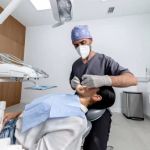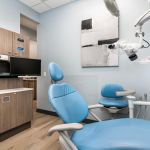- Understanding Oral Cancer and Its Impact
- Early Warning Signs of Oral Cancer to Watch For
- How Oral Cancer Is Detected and Diagnosed
- Risk Factors That Increase Oral Cancer Chances
- Real-Life Stories of Oral Cancer Detection and Survival
- Taking Preventive Steps and Where to Find Help
Understanding Oral Cancer and Its Impact
Oral cancer is a serious disease that affects thousands of people every year. It can develop in any part of the mouth, including the lips, tongue, cheeks, floor of the mouth, hard and soft palate, sinuses, and throat. Recognizing signs of oral cancer early warning signs and detection is crucial for improving treatment outcomes and survival rates.
Oral cancer often starts as a small, unnoticed lesion or sore but can quickly progress if left untreated. The disease not only threatens life but also impacts speech, eating, and appearance, making early detection vital. Awareness and timely action can save lives, which is why understanding symptoms and diagnostic procedures is so important.
Early Warning Signs of Oral Cancer to Watch For
Detecting oral cancer early hinges on identifying its warning signs. Common early symptoms include persistent mouth sores that do not heal, lumps or thickened areas inside the mouth or on the neck, unexplained bleeding, and white or red patches on the gums or tongue.
Other signs may include difficulty swallowing, persistent pain or numbness in the mouth or lips, and changes in voice or speech. Because these symptoms can resemble less serious conditions, many people overlook them, delaying diagnosis.
For instance, a patient might notice a painless sore that lingers for weeks. While it may seem minor, this could be a critical early sign of oral cancer that warrants prompt dental or medical evaluation.
How Oral Cancer Is Detected and Diagnosed
Oral cancer detection involves a combination of clinical examination and diagnostic testing. Dentists often perform routine oral cancer screenings during check-ups, looking for abnormalities. If suspicious lesions or symptoms are present, further tests such as biopsies, imaging scans, or endoscopy may be recommended.
A biopsy, where a small tissue sample is taken for lab analysis, remains the gold standard for diagnosis. Early and accurate diagnosis through these methods enables targeted treatment plans that improve patient outcomes.
Advances in technology, like fluorescence imaging and toluidine blue staining, also assist clinicians in spotting oral cancer earlier than traditional methods alone.
Risk Factors That Increase Oral Cancer Chances
Understanding the risk factors associated with oral cancer helps identify individuals who should be especially vigilant. Tobacco use, including smoking cigarettes and chewing tobacco, is the leading cause of oral cancer. Heavy alcohol consumption further raises the risk, particularly when combined with tobacco use.
Other factors include prolonged exposure to ultraviolet (UV) radiation, especially for lip cancer, infection with human papillomavirus (HPV), a weakened immune system, and poor oral hygiene. Age and gender also play roles; oral cancer is more common in men and typically affects those over 40.
Awareness of these risk factors can prompt earlier screening and lifestyle changes that reduce the likelihood of developing oral cancer.
Real-Life Stories of Oral Cancer Detection and Survival
Jessica, a 52-year-old teacher, discovered a small white patch on her tongue during a routine dental visit. Because her dentist recognized the early warning signs of oral cancer, a biopsy was performed, confirming early-stage oral cancer. Thanks to timely treatment, Jessica underwent a successful recovery and now advocates for regular oral screenings.
Another story involves Mike, a longtime smoker who ignored mouth discomfort until difficulty swallowing prompted him to seek help. His diagnosis was later stage oral cancer, highlighting the importance of early detection and symptom awareness.
These stories reinforce the life-saving potential of understanding and acting on oral cancer warning signs.
Taking Preventive Steps and Where to Find Help
Prevention is the best defense against oral cancer. Quitting tobacco, limiting alcohol, practicing good oral hygiene, and protecting lips from sun exposure are critical measures. Regular dental visits for oral cancer screenings enhance early detection chances.
For those seeking guidance, Dentistry Toothtruth offers resources, expert advice, and access to screenings that help detect oral cancer early. Their support can make a significant difference in maintaining oral health and catching potential issues before they escalate.
Being proactive about your oral health, knowing the signs of oral cancer early warning signs and detection, and seeking professional advice promptly are vital steps toward safeguarding your well-being.







 Summit Dental Care4.0 (124 review)
Summit Dental Care4.0 (124 review) Fair Oaks Orthodontics5.0 (29 review)
Fair Oaks Orthodontics5.0 (29 review) Dental Care of North Fort Myers4.0 (708 review)
Dental Care of North Fort Myers4.0 (708 review) Sarkissian Dentistry: Robert Sarkissian, DDS, MAGD5.0 (84 review)
Sarkissian Dentistry: Robert Sarkissian, DDS, MAGD5.0 (84 review) Root 66 Endodontics4.0 (16 review)
Root 66 Endodontics4.0 (16 review) Scott Soderquist, DDS, MS0.0 (0 review)
Scott Soderquist, DDS, MS0.0 (0 review) The Importance of Oral Health Education During Pregnancy for a Healthy Pregnancy
The Importance of Oral Health Education During Pregnancy for a Healthy Pregnancy Best Tips for Brushing Your Teeth Properly for Healthy Gums: Essential Techniques for Oral Health
Best Tips for Brushing Your Teeth Properly for Healthy Gums: Essential Techniques for Oral Health Why Skipping Dental Checkups Can Lead to Bigger Oral Health Problems
Why Skipping Dental Checkups Can Lead to Bigger Oral Health Problems Advantages of Porcelain Dental Restorations
Advantages of Porcelain Dental Restorations How Can Diabetes Cause Tooth and Gum Problems? Preventing and Managing Oral Health Issues
How Can Diabetes Cause Tooth and Gum Problems? Preventing and Managing Oral Health Issues Healthy Habits for Promoting Good Oral Health and Hygiene: Tips for a Healthy Smile
Healthy Habits for Promoting Good Oral Health and Hygiene: Tips for a Healthy Smile